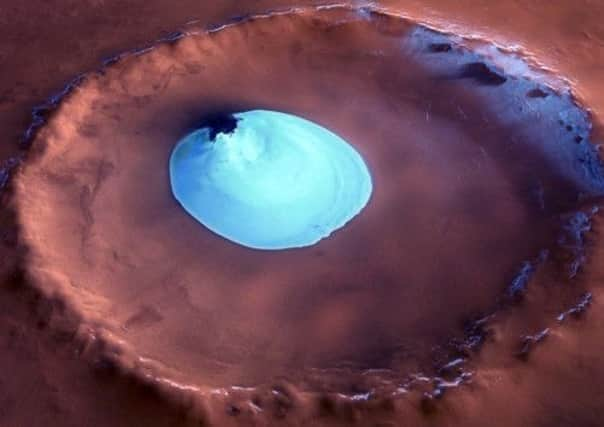Mars had lake that could have spawned alien life


Analysis of sedimentary rock outcrops or mudstones suggested there was at least one lake on the red planet and it may have lasted for tens if not hundreds of thousands of years, allowing microscopic life to flourish.
The analysis showed that the lake was calm and possibly had fresh water, containing key biological elements such as carbon, hydrogen, oxygen, nitrogen and sulphur.
Advertisement
Hide AdAdvertisement
Hide AdSuch a lake would have provided perfect conditions for simple microbial life such as chemo- lithoautotrophs to thrive.
On Earth, chemolithoautotrophs are commonly found in caves and around hydrothermal vents.
The microbes break down rocks and minerals for energy.
Mudstones generally form in calm conditions. They are created by very fine sediment grains settling layer by layer on each other, in still water.
The finding was made by a team of researchers from the Curiosity Rover mission of Nasa’s Mars Science Laboratory (MSL), which includes a member from Imperial College London.
The mudrocks were at a site named Yellowknife Bay in Gale Crater, near the Martian equator.
These revealed that Gale Crater, a 150km-wide impact basin with a mountain at its centre, sustained at least one lake around 3.6 billion years ago.
Professor Sanjeev Gupta, a member of the MSL mission from the Department of Earth Science and Engineering at Imperial College, said: “It is important to note that we have not found signs of ancient life on Mars.
“What we have found is that Gale Crater was able to sustain a lake on its surface at least once in its ancient past that may have been favourable for microbial life, billions of years ago.
“This is a huge positive step for the exploration of Mars.
Advertisement
Hide AdAdvertisement
Hide Ad“It is exciting to think that, billions of years ago, ancient microbial life may have existed in the lake’s calm waters, converting a rich array of elements into energy.
“The next phase of the mission, where we will be exploring more rocky outcrops on the crater’s surface, could hold the key whether life did exist on the red planet.”
In previous studies, Prof Gupta and the MSL team have found evidence of water on Mars’ surface in other rocks such as conglomerates. However, the new research provides the strongest evidence yet that Mars could have been habitable enough for life to take hold.
The team analysed the geology and chemistry of the mudstones by drilling into the rock using the MSL six-wheeled science laboratory, which is remotely operated from the Jet Propulsion Laboratory in Pasadena in the US.
The next step will see the team using the rover to explore Gale Crater for further evidence of ancient lakes or other habitable environments in the thick pile of sedimentary rocks scattered across the crater’s surface.
The findings are published in the journal Science.